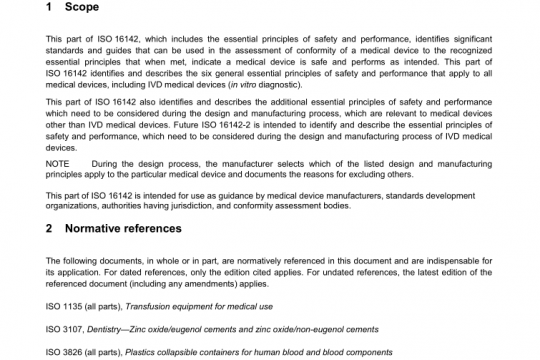AAMI DF2 pdf free download
AAMI DF2 pdf free download.Cardiac defibrillator devices.
2.9 UNITED STATES DEPARTMENT OF DEFENSE. Military standard environmental test methods and engineering guidelines. MIL-STD-810E, 1989. 3 Definitions For the purpose of this standard, the following definitions apply: 3.1 automatic external defibrillator (AED): Defibrillator that analyzes the cardiac rhythm, identifies shockable rhythms, and includes logic circuitry to operate automatically the defibrillator when a shockable rhythm (ventricular fibrillation [VF] and certain forms of ventricular tachycardia [VT]) are detected. 3.2 external defibrillation: Application of a high-energy, short-duration electrical discharge to the heart (myocardium) by means of electrodes placed on the body surface at appropriate locations in an attempt to terminate VF and restore an organized, perfusing cardiac rhythm. 3.3 external transcutaneous pacer: Device that may analyze the ECG and that delivers pacing pulses to the heart, at a controllable rate and current, by means of electrodes placed on the body surface. 3.4 pacing: Application of moderate-energy pulses of very short duration to the heart, at a controlled current and frequency, to achieve cardiac contractions of appropriate strength and rate in case of complete AV block or extreme bradycardia. In transcutaneous external pacing, electrodes placed on the body surface are used to sense the cardiac rhythm and to deliver the pacing pulses. 3.5 self-adhesive combination defibrilltor/monitoring electrodes: Self-adhesive electrodes placed on the chest to acquire an ECG and to transmit the defibrillation discharge to the patient.3.6 synchronized cardioversion: Timed application of a high-energy, short-duration electrical discharge to the heart to terminate arrhythmias that preserve ventricular contractions (such as VT or atrial fibrillation). R waves (associated with ventricular contractions) are detected, and the electrical discharge is timed to occur shortly after the R wave (to avoid the vulnerable period of the heart cycle). 3.7 universal-function electrodes: Self-adhesive electrodes that are designed for acquisition of the ECG and for efficient transmission of both defibrillation and pacing pulses. 3.8 ventricular fibrillation: Chaotic cardiac rhythm in which the normal activation sequence of myocardial cell depolarization fails and individual cells depolarize rapidly and in a random pattern, resulting in abrupt loss of cardiac output. VF usually causes death after a few minutes. It usually is self-sustaining and can be terminated only by a strong electrical discharge (defibrillation). 4 Requirements NOTEThe rationale (annex A) provides background information that is helpful in understanding and interpreting the standard; therefore, careful study of the rationale is recommended. 4.1 Device labeling Markings affixed to defibrillators shall resist the deleterious effects of handling and cleaning expected during intended use. Good contrast shall be maintained between the lettering and background materials. 4.1.1 Defibrillator labeling—Control indicators—Cautionary warning notices Identification and electrical rating markings shall be readily visible on the defibrillator and the battery charger. Identification and electrical rating markings shall include, at a minimum, a) name or trade name of the manufacturer; b) catalog number or equivalent designation;c) serial number or other unique product controlling identification traceable to the date of manufacture; d) battery catalog number or equivalent designation (if applicable); e) line (mains) voltage range; f) peak line current (the average over the 2 seconds immediately following initiation of charge for maximum energy select); g) line frequency range; h) identification of applicable battery charger from which the battery can be recharged; if the unit can be powered by the battery charger, an indication of any limitations of operation when the battery charger is connected to the line (mains) voltage and to the equipment (if applicable). The functions of controls and indicators shall be labeled according to the following: a) The ON/OFF control shall be labeled with the ON and OFF positions clearly indicated. This may be accomplished by a switch with two positions labeled ON and OFF; as part of the Energy Select control, with a distinct position labeled OFF; by an alternate action mechanism labeled ON/OFF, with a power ON indicator to distinguish the mode; or by other designs that clearly indicate the operating condition of the defibrillator.AAMI DF2 pdf download.
Other IEC Standards
-

ANSI AAMI ISO 16142-1 pdf free download – non-IVD medical devices and guidance on the selection of standards
AAMI standards list DOWNLOAD -

ANSI AAMI ISO 16142-2 pdf free download – General essential principles and additional specifc essential principles
AAMI standards list DOWNLOAD


